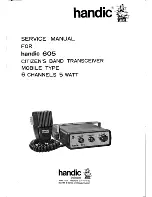
Operating
Operating
Operating
Operating instructions
instructions
instructions
instructions
Before using the radio for the first time, please see the connections instructions on
the back cover. Improper connections may damage the transceiver.
When power is turned on, you will hear (in CW) the letter "A" if a paddle is
connected or the letter "M" if a straight key is connected. (If no key is connected
you will hear the letter "A").
V/M/SAV
V/M/SAV
V/M/SAV
V/M/SAV Button
Button
Button
Button
Click this button to alternate between Memory mode (MEM) and VFO mode, the
LCD screen will show the MEM-xx or VFO-xx (xx is the memory number from
01-30). In Memory Mode the tuning knob is used to change memory locations. In
VFO Mode the tuning knob is used to change the frequency. Press the V/M/SAV
Button for 2 seconds (the LCD screen will display SAVE), the current frequency
and current mode will be stored in memory locations selected.
RIT/MOD
RIT/MOD
RIT/MOD
RIT/MOD Button
Button
Button
Button
Click this button to enter or exit RIT function. A dash (-)
will be displayed to the right of the frequency display.
When in the RIT mode, turning the tuning knob clockwise raises the frequency (as
Indicated by the up arrow). Turning the tuning knob counter0clockwise will lower
The frequency (as indicated by the down arrow).
To change the modes, press and hold the RIT/MOD for 2 seconds, This will allow
you to change the mode from CW to USB to LSB and CW again. Press and hold
the RIT/MOD for 2 second for each change. ( only change to LSB and CW on 80m)
ATT
ATT
ATT
ATT Button
Button
Button
Button
Click this button to turn ON or OFF the ATT (receiver attenuation). The S in the
LCD display will change to A indicating the ATT is ON.
Frequency
Frequency
Frequency
Frequency Tuning
Tuning
Tuning
Tuning Steps
Steps
Steps
Steps
While in receiving mode, press the tuning knob
will change the tuning step to
either 10Hz, 100Hz or 1KHz. As the change is made, the position the display that
the step is being changed to will momentarily display an underscore (_) for
verification of the change. If you press the tuning knob for 2 seconds, the tuning
step will be 100KHz. In RIT Mode, press the tuning knob will change
the tuning
step to 10Hz or 100Hz. Out of Amateur band, step is 10Hz, 100Hz or 5KHz.
IF
IF
IF
IF filter
filter
filter
filter Button
Button
Button
Button
Tuning for IF filter bandwidth adjustment. Clockwise increase, counter-clockwise
decrease. From 400Hz - 3KHz.
Frequency
Frequency
Frequency
Frequency Locking
Locking
Locking
Locking Function
Function
Function
Function
To lock or unlock the tuning knob, simultaneously
Press both V/M/SAV and the RIT/MOD for about
1 second. In lock mode the symbol(#) is displayed next to the frequency. In this
mode, the tuning knob will not change the frequency.
Automatic
Automatic
Automatic
Automatic Key
Key
Key
Key Function
Function
Function
Function
Automatically
Automatically
Automatically
Automatically call
call
call
call CQ
CQ
CQ
CQ
: Press the CQ/SET button lightly to send "CQ CQ CQ DE
(your call sign three times) PSE K". If the CQ is to be cancelled press CQ/SET
button for 1 second at any time during the CQ.
Change
Change
Change
Change speed
speed
speed
speed
: Press CQ/SET button for approximately 2 second and the Morse
code letter "S" will be heard, then release the button. Within 8 seconds, push the
paddle to the DOT side to increase the keyer speed or to the DASH side to
decrease the keyer speed. When finished, press CQ/SET lightly to exit (the letter
"E" will be heard)
How
How
How
How to
to
to
to Enter
Enter
Enter
Enter Your
Your
Your
Your Call
Call
Call
Call sign
sign
sign
sign
: Press CQ/SET button and hold about 2 seconds,
you can hear the Morse code "S", continue to hold down the CQ/SET button until
you hear the letter "I", at this time release CQ/SET button, and then send your call
sign with the paddle as usual. When done, a short click of the CQ/SET button to
exit, you will hear Morse code letter "E", or wait for several seconds to exit.
Transmitting
Transmitting
Transmitting
Transmitting
When transmitting, the mode of operation is replaced by "TX" and letter "S" is
replaced with letter "P" followed by series of vertical bars. Each 3 bars represents
approximately 1 Watt of output power. If you attempt to transmit outside the 4
amateur band, "TX ERROR" will flash on display






















